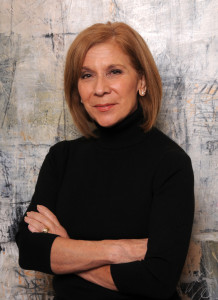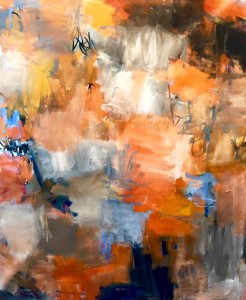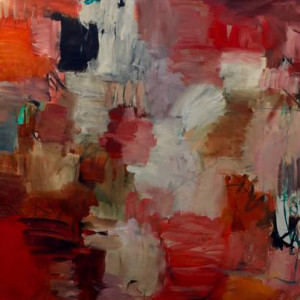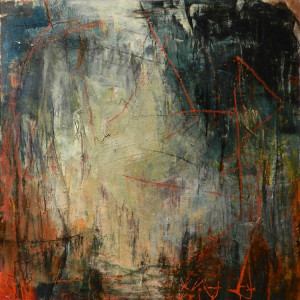Mary Akers: Hi, Pat! Thanks so much for agreeing to talk with me today. I’m such a fan of your beautiful work and I’ve learned more about your process as we’ve collaborated on the Winter 2017 issue. One of the things I so admire is your continual search for inspiration. I feel like you are always “open” always taking in the world around you and processing it into beautiful images. Is that just my outsider perception? Or do you recognize some truth in that?
Pat Zalisko: Mary, thank you for asking me to collaborate with you. That project opened up yet another opportunity to explore in my art making. I am incredibly grateful for you sharing this project with me!
The world is a rich and burgeoning storeroom, a bottomless cupboard filled with ingredients that spark new art or a series. I am only processing what we are all seeing, feeling, experiencing, but in my own way. This project was particularly important to me, as you approached me at time when I was exploring line and mark making during a residency. I discovered several things then, including that what I read and heard was being translated into a new visual language. I’ve coined this series, Disappearing Lines.
MA: “A rich and burgeoning storeroom.” What a wonderful way to put it. That’s going to be ricocheting off my brain pan all day. So good. I imagine when using other sources of creative work for inspiration–particularly writing, as you have done here–there must be some things that are difficult to translate, or perhaps TRANSMUTE is the better word. Can you talk briefly about the joys and frustrations of that process?
PZ: As readers, we digest writing through the filters of our own experiences, personalities, thought patterns. How each of us processes an elegant piece of prose, for example, will be different. And when I read something that is moving, I can only interpret it against my own personal biases. Powerful words stay with me long into a piece of art. But I do feel that we all share a common experience, a common thread. And I find this shared history comforting, because it at once confirms our individual dignity and our universal frailty.
MA: I feel that your artwork offers that, too–the comfort of shared history and experience. I’ve thought a lot about the function of art, the accessibility of art, and the conversation between artist and “consumer.” I feel strongly that art takes two to be fully realized. At first, the artist is simply in conversation with his-or-her own mind … until there is someone on the other side of that art, enjoying it, experiencing it, or even hating it. But it seems to me that art takes two brains to be fully realized–-the creator’s brain and the experiencer’s brain. Do you agree that conversation is inherent in the creation/realization of art?
PZ: Absolutely. I once had a spirited debate with a mentor, who felt slighted when he discovered that his art was often misinterpreted/interpreted by viewers in a manner other than what he intended. I disagreed with him. I don’t believe that it’s an artist’s mission to dictate how their work must be viewed. Art – like writing and music – are designed to evoke an emotional response.
If a sculptor or painter – or playwright, novelist, poet – intends a work of art to portray a particular point of view, but it’s interpreted or seen in various other ways, that ‘conversation’ between the work and the viewer or reader is valid nonetheless. The ‘consumer’ of the work is just as unique as the creator: we each take in the work through our own filters and life experiences, and this gives the work just as much (if not richer) meaning. And that dialog between the work and the viewer or reader is a spiritual, expressive one.
MA: Along those lines, did you feel as if you were “in conversation” with the authors whose work you used as direct inspiration for a painting? Did you read and then immediately paint? Or read, let it percolate, and then paint?
PZ: The writing here was particularly powerful. In most instances, I read and allowed the words of these writers to wash over me. I read them, several times. I still return to them.
During this project, I journaled choice words or phrases, theirs or mine. I silently rehashed lines and words on a continuous loop in my head as I painted, keeping music going in the studio to maintain my pace. In this sense, I suppose, I felt more like a student, listening avidly to the wisdom of gifted instructors who could shed light on our tragedies, loves, triumphs, relationships, flaws. And I was conversing, in my way, by creating art in reply or to document what I felt. Through it all, I was learning new perspectives for the reactions we’ve all had to the experiences described by these writers.
MA: That continuous loop is such a rich vein creatively, isn’t it? Now I feel like I need to start paying more attention to my inner loops. 🙂
Did any of the work surprise you? By that I guess I mean, perhaps the deeper you went into painting it, the deeper you felt the meaning of what you had read …
PZ: This is interesting. I discovered that I would dream about select pieces here … and I still do occasionally. For example, Noa Sivan’s Two Cats, Jeff Rose’s Lighting Up, and Stephen Eoannou’s Slattery’s Ghost touched me to the core. And Haley Yelencich ‘s On Transmutation continues to haunt me, unearthed old memories and treading new ground in my art. All of the authors you selected stirred up the embers of emotions that we’ve all felt, but incorrectly presumed were long dead.
MA: I feel as if abstract work lends itself especially well to emotional interpretations and that what we bring to a viewing of abstract art influences what we “find” in the painting. Do people sometimes interpret your work in ways that surprise you? How do you feel about that?
PZ: Abstraction captures things that cannot be seen, described or felt in any other way. To paraphrase Paul Klee, it makes “visible the invisible.” Perhaps exactly because it doesn’t describe in exhaustive detail that which we experience in the world, I’ve pursued it. I’ve spent a working lifetime using words as a precise weapon and tool. The ‘words’ of abstraction, however, completely elude such use. They are far more potent, can feel like the slap a doctor delivers to a newborn’s bottom or a surprise punch, without uttering a syllable. I’m hoping to feel the magic in that art, rather than literally read it.
I do agree with you: if I, as an artist, process what I’m seeing/hearing/reading/feeling in my own unique manner, then we, as viewers or readers must necessarily bring our own interpretations to a work. We have no choice. I am always interested to hear how viewers perceive my art.
MA: What role do you think recovery plays in the creative process? Have you found yourself drawn to images or themes that you later realized stemmed from something you needed to work through?
PZ: I was perhaps drawn to this collaboration with you because of that reason, because as you shared these particular pieces with me, I relived the immediacy and freshness of emotions and experiences from my own life or those close to me. In that sense, it gave me the opportunity to review those events from an older, more detached perspective. It was therapeutic for me and I thank you, and these writers, for that opportunity.
Creating intellectual property like writing or art puts a face on and names that otherwise eludes the artist or writer. Identifying “it” in the work helps us understand and work it out. This can be a painful experience with beautiful, transformative consequences.
MA: And finally, since we are a recovery-themed journal, what does “recovery” mean to you?
PZ: As I age, I’m discovering that healing means facing that which we fear most, whether it’s an addiction, an illness, our parents’ aging, dysfunctional siblings, surviving and escaping war, starvation, death. If we can confront the pain of that fear, perhaps finding solutions in creative efforts (like making art, writing, reading, composing), we emerge from these tragedies and trials, often finding love and support from others and we realize that we’re not alone.








